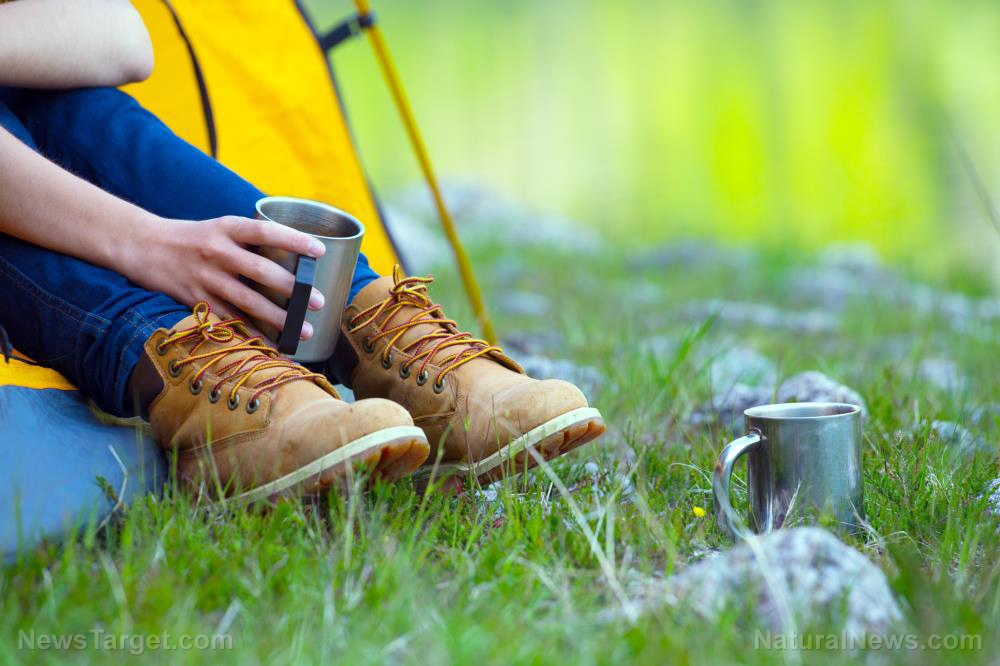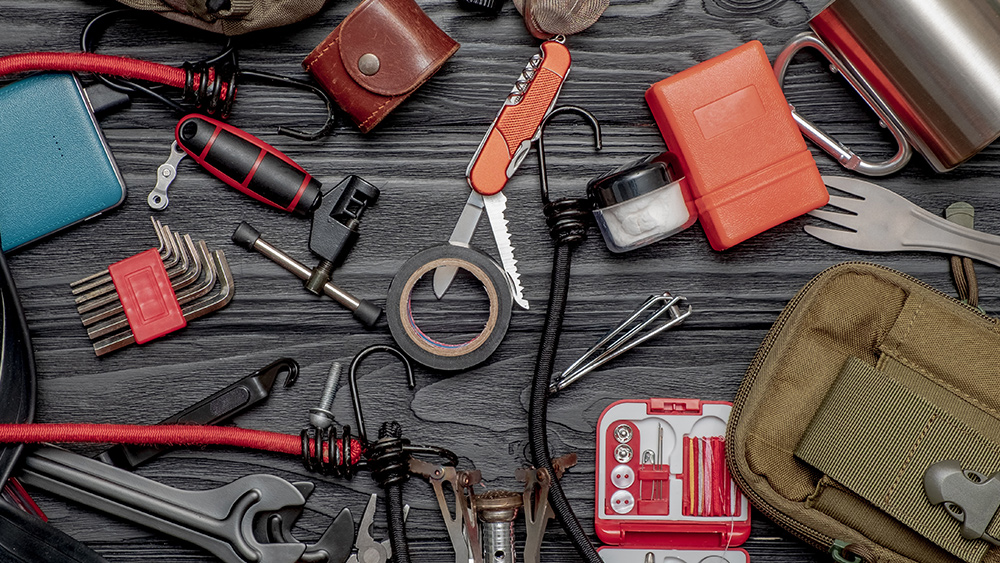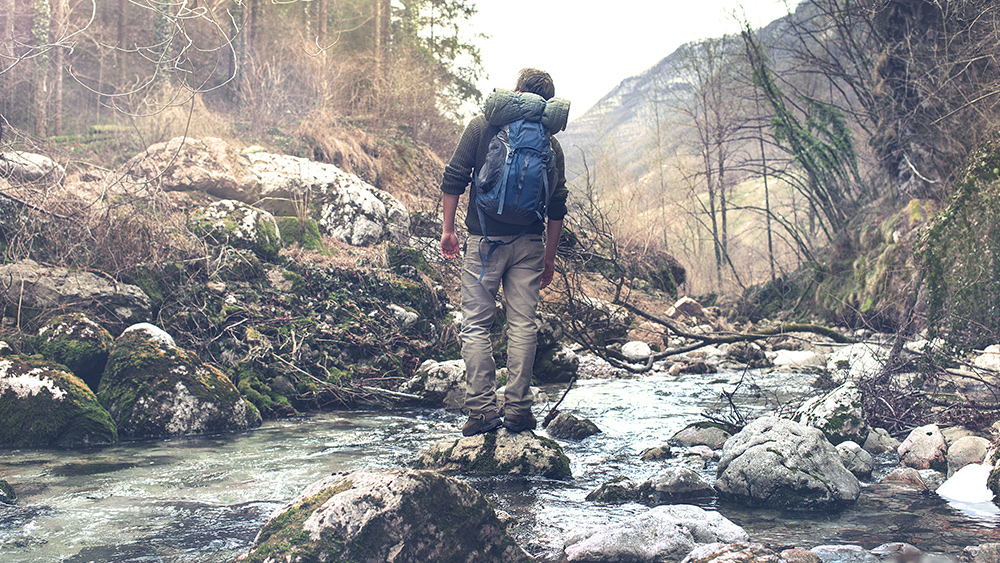
It's always fun to plan a vacation. But if you're a prepper, this also means having a plan to make sure you know what to do and where to go if you get lost, especially if you are heading to an isolated area. (h/t to ApartmentPrepper.com)
Whether your vacation only takes a couple of days or one week, you should take into account the following factors while finalizing your emergency survival plans in case you get lost:
- The specific features of the area – Are you familiar with the location? Is it an isolated area or can you take shelter in other areas, like hotels or small urban areas?
- The features of your trip – What kind of vehicle are you going to drive? Do you have a plan in case your car breaks down?
- Your physical shape – Are you in good shape? Or do you need prescription medication for some health issues? Do you need help from others if SHTF and you need to run or walk for a long distance?
- Your skills and gear – Do you have useful survival skills? If you get lost, can you navigate, track and survive on your own? Are you traveling with someone else who has survival skills?
If you're driving to your location, prepare a bag with these survival tools:
- Food and water
- A map and compass
- A change of clothing and walking shoes or hiking boots
- A flashlight
- A blanket
- Matches stored in a water-resistant container
Before you leave, tell other family members or a trusted friend where you're going and how long you'll be gone. That way, if something happens to you, they will know where to send a rescue team.
We are building the infrastructure of human freedom and empowering people to be informed, healthy and aware. Explore our decentralized, peer-to-peer, uncensorable Brighteon.io free speech platform here. Learn about our free, downloadable generative AI tools at Brighteon.AI. Every purchase at HealthRangerStore.com helps fund our efforts to build and share more tools for empowering humanity with knowledge and abundance.
What to do when you get lost in an isolated area
If you are lost in an isolated area, the most important thing to do is to remain calm and stay put.
Panic can result in poor decision-making, and this can make it harder for rescue teams to find you. (Related: Survival navigation: Using trees, insects and birds to navigate.)
Follow these general guidelines to increase your chances of being found if you get lost:
Assess the situation
Look around and try to identify any trails, landmarks or other signs of civilization. Check your phone for signal and try to call or send a text message for help.
Stay where you are
If you can't find your way back, don't wander around since this will make it more difficult for rescuers to locate you.
Stay put, ideally in an area with good visibility and shelter from the elements.
Make yourself visible
Use brightly colored clothing or anything reflective to make yourself more visible to search parties or aircraft.
If you have the tools to do so, start a signal fire.
Stay hydrated
Drink water to prevent dehydration. If you don't have water in your bag, try to find a clean source of drinking water like a pond or stream. Purify the water before drinking.
Use your survival gear
If you still have your survival gear with you, like a first-aid kit or a compass, use them to improve your chances of survival.
Wait for rescue
If you've been lost for several days, don't lose hope. Try to remain in the same spot and wait for rescue teams to find you. It may take some time for them to arrive so stay patient and don't do anything that could endanger you.
Build a shelter
If you don’t have a tent or other shelter, use your tools and survival skills to build one using natural materials in the area like branches, leaves, moss and other debris.
The shelter will protect you from the elements and help you stay warm and dry.
Start a fire
With a fire, you can stay warm, cook and see in the dark.
Use dry wood and other materials to build a fire. Always follow proper fire safety protocols to prevent wildfires.
Signal for help
If you have a whistle or other signaling device, use it to signal for help.
Alternatively, you can gather rocks, logs or other objects to spell out "HELP" on the ground or a hillside.
Stay warm
Hypothermia is one of the dangers that you might face in the wilderness, especially at night.
Stay warm and dry by wearing appropriate clothing and building a shelter. If you have access to tools, build a fire.
Stay positive
It can be difficult if you've already been lost for several days, but try to stay positive and hopeful.
If you told your family and friends where you're going, they should know when to call for help so someone can find you.
Use your tracking skills
Following human footprints can be a useful skill in survival situations, such as tracking a lost hiker or identifying the direction of a group's movement.
And if you are lost, you can apply your skills to backtrack to where your journey began.
Follow the steps below to track human footprints, including yours:
- Look for fresh footprints – Fresher footprints are easier to track. Look for footprints that haven't been disturbed by the wind, rain or other elements.
- Identify the direction of travel – Determine the direction of the footprints by looking at their shape. The heel of the footprint is often deeper and more defined than the rest of the print, and it will point in the direction of travel.
- Analyze the stride length – The distance between each set of footprints can help you find out the person's stride length. You can then use this information to estimate the person’s height and speed.
- Look for other clues – Pay attention to other signs around the footprints that may indicate the person's movements, such as broken twigs on the ground or disturbed leaves nearby.
- Stay on track – Once you have identified the direction of the footprints, stay on the same path. Watch out for fresh prints. Take note of other factors that may affect your tracking, like changes in terrain or the weather.
Tracking human footprints is a survival skill that takes practice and patience. You should respect the privacy and rights of others and avoid trespassing or intruding on private property so you don't get into trouble.
Preppers know that surviving in the wilderness requires preparation, knowledge and resilience. Before you go on vacation, make sure you learn basic skills like navigation, shelter building and fire starting. Prepare a bag with tools that will help you survive and find your way back to civilization when SHTF.
While traveling for leisure or survival, pay attention to your way of walking and get used to remembering what your footprint looks like. Take a picture of it if you have your phone so you can confirm if you are looking at your own footsteps or the footsteps of other people.
Visit Survival.news for more tips on how to survive if you get lost in a remote location.
Watch the video below to know more about survival rain gear that you should include in your bug-out bag or survival bag.
This video is from the Cahlen channel on Brighteon.com.
More related stories:
What are skills, rules and principles that will help you survive the wilderness alone?
Disaster prepping 101: Learn land navigation skills to get out of SHTF situations.
Advanced prepper tips to take your prepping to the next level.
Sources include:
Please contact us for more information.




















